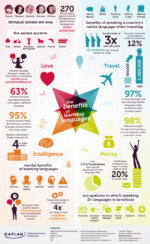It seems like I just can’t get away from the same kinds of PPP vs. TBL discussions I used to have in the 1990s, no matter how hard I try.
This morning, for example, I woke up to a bit of a Twitter feud.
Apparently, in a recent talk Penny Ur claimed that there’s no research evidence supporting task-based Learning. Her claim, as you can imagine, didn’t sit well with most TBL advocates, who argue that there’s a solid body of research out there demonstrating the benefits of task-based learning. In particular, they kept referring to a 52-case meta analysis by Bryfonski and McKay, which I intend to read soon. And when I do, here’s the question I will try to keep in mind:
Can we prove empirically that a method works? I’m using the word method in the broadest possible sense, of course.
SLA research has suggested over the years that language learning is essentially organic and non-linear, and that students’ developmental sequences can’t be significantly altered by any “outside forces” (e.g. grammar syllabuses). It would appear that a focus on form can be useful as long as it naturally emerges from communication, and that negotiating meaning with more proficient speakers helps to drive acquisition forward.
So, on these grounds, task-based learning in theory seems like a better model than, say, PPP (presentation-practice-production) since it’s more in keeping with current SLA research.
But things are complicated.
One, as a profession, when we talk about PPP, do we know exactly what we’re talking about? For example, what does the first P look like? Is it teacher-led or text-based, with students answering guided-discovery questions? In either case, how much metalanguage will be used? And how about the second P? What kind of practice will students engage in and how much resemblance will it bear to realistic communication (e.g. information gap, choice etc)? How much chunking will it promote? And what happens, say, if the teacher decides to invert the 3 Ps, throw students in at the deep end right from the start and take it from there? And what if the teacher uses the second P on a remedial basis only, after the more “communicative” activity? There are endless possibilities, and some seem to do a better job of fostering implicit learning than others – one of the main criticisms leveled against PPP.
Task-based learning is not a monolith either. Rod Ellis, for example, lists four different versions of TBL, which vary in terms of when, how and how much linguistic support is offered throughout the task cycle. Interestingly, two versions of TBL advocate a focus on form pre-task, which, in certain cases, might veer dangerously into first P, focus on forms territory. So, depending on how a particular TBL model is conceptualized and implemented in the classroom, we might end up with a watered-down version of TBL which in some cases might feel more like a contemporary representation of PPP than anything else.
It seems to me that in order to support or criticize either model, first we need to be able to describe it more accurately so that we know we’re all talking about roughly the same set of phenomena.
The second key issue is proving that method A works or works better than B – and, again, I’m using the word method here very loosely to describe learning frameworks in general. There are so many variables at play that it might be hard to demonstrate empirically that learning outcome A was generated by method A rather than regardless of it – or even despite it.
For example, how do you gauge and isolate:
a. Each individual learner’s “readiness” to learn whatever it is that the teacher set out to teach?
b. The amount of previous out-of-class exposure to L2 that might have led students to that level of “readiness”?
c. The amount of ongoing out-of-class exposure to L2 that might prime students to notice the new language in the input that surrounds them?
d. The degree to which each individual learner perceives a specific language area or communicative goal as personally relevant (and therefore worth the effort)?
e. The degree to which students will identify with the “method” and perceive it as useful (which might affect the final result)?
f. The degree to which the method will be implemented as it was originally intended by the “design team” rather than as an idiosyncratic version filtered by the teacher’s own belief system?
g. Each student’s fondness for the person teaching her or him, which might have an impact on how much learning ultimately takes place?
I could go on forever.
So, it might well be that method A works. Or even that it works better than B. But can we prove it?
And if the answer is no, what’s the next step? What objective, externally-validated criteria can we use to support what we do in class other than an intrinsic sense of plausibility, to use Prabhu’s term?
To simply say that “it all depends on context”, comforting as it might sound, works as a bit of a thought-terminating cliché. And this is not where the discussion should end.
I’d be interested to hear your views.




Hi Luiz,
Great post! You ask a few critical questions, which I myself have. I personally am an advocate of TBL, especially considering the learners’ perspective. It is much more enjoyable and there is always a factor of surprise. Also, language is used, learnt and taught much more naturally. For YLs and Teens this has proven to be more enjoyable than PPP. I do believe PPP is an approach which can easily be used before a TBL lesson in order to introduce grammar or specific lexis you would like learners to use. So, my conclusion is that nowadays learners enjoy the TBL approach more than the PPP approach and, therefore, I favor TBL in my lessons and studies too.
Cheers,
Juliette Gaasenbeek
Thank you, Juliette!